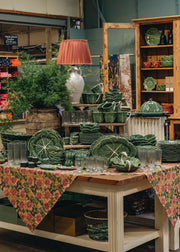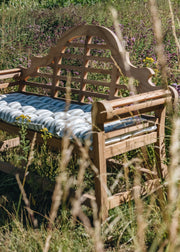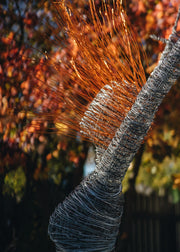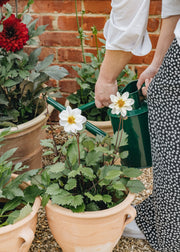Exploring Our Bulb Market

We are particularly excited about the glorious bulbs filling our Bulb Market. There is a large choice because we have consciously selected varieties that span the colour spectrum and include examples of the remarkably diverse flower and petal shapes available.
For gardeners, new or experienced, the idea of choosing bulbs is akin to a child let loose in a sweetie shop.
However, like many of the best experiences, the pleasure given by bulbs is not instant gratification, but a slow, rewarding burn as they come to brilliant life. Spring bulbs, planted in the autumn, are selected at a time when the full-blown drama of the summer garden is waning, and the leaves are beginning to fall. Because of this timing, bulbs are a salve, wrapped in their own natural packaging, offering the promise of beauty in the future.
Favourites from the Bulb Market
Different approaches to Bulb Planting:
Wordsworth‘s ‘host of golden daffodils’ trumpets the arrival of spring, often set off by the purple of crocus. The work involved in planting a sack of bulbs is considerable, even with the right tools, but the effect is enchanting. The canary yellows and imperial purple are traditional colours, followed by the blues of muscari and bluebells, but there are so many varieties of daffodils (narcissi) to choose from and the harlequin palette presented by later tulips is irresistible. But before you start, it is best to have a clear idea about the colour scheme to ensure the blooms complement each other.

Narcissus Thalia

The perfect tool for the job, our Sneeboer Bulb Planter
As with all gardening, the planting of spring bulbs can be approached in different ways. Some people devise planting schemes with great precision, the bulbs layered to ensure a continuum of colour, this method is evocatively described as ‘lasagne’ planting and works well for smaller areas of border or in large containers where more control is possible. Common sense dictates that smaller varieties such as muscari (grape hyacinths) and snowdrops should be planted towards the front, with narcissus and tulips, depending on their variety, further back.

Muscari (Grape Hyacinth)
For ‘succession’ planting, it is also important to consider interlacing early and late varieties so that while early bulbs, such as snowdrops, crocus and daffodils are fading, later species, for example tulips, grape hyacinth (muscari) or camassia, can take over. Longer lasting varieties which bridge the early and later bulbs, for example alliums, can be interspersed to bridge the gaps.
Others may take a more naturalistic approach, favouring serene pools of snowdrops, bright winter aconites scattered in woodland and swathes of Narcissus (already mentioned) in orchards or on banks. Such informality must be planned! Throw the bulbs out over the ground before holes are dug, rather than trying to arrange them to look random.
Naturally occurring in our part of the Cotswolds are Britain’s only native fritillaries (Fritillaria meleagris), which can still be seen growing indigenously in the water meadows of the Thames. Planted in early autumn, fritillaries will colonise in a shady border or in the lawn, producing gloriously nodding, checkerboard flowers.
A final word about tulips, because they are arguably the most ravishing spring bulbs and come in a vast range of colours, from ice white to a dark purple that is almost black. The shapes vary hugely from double-flowered heads, as multi-petalled and blousy as a paeony, to the strict silhouettes oflily flowered varieties, as well as the voluptuously baroque form of the shaggy-edged parrot tulips. The choice of tulip bulbs in the Bulb Market is extremely tempting and totally explains, we hope, the obsession that took hold of the Netherlands in the mid-1630 known as tulip mania.



















